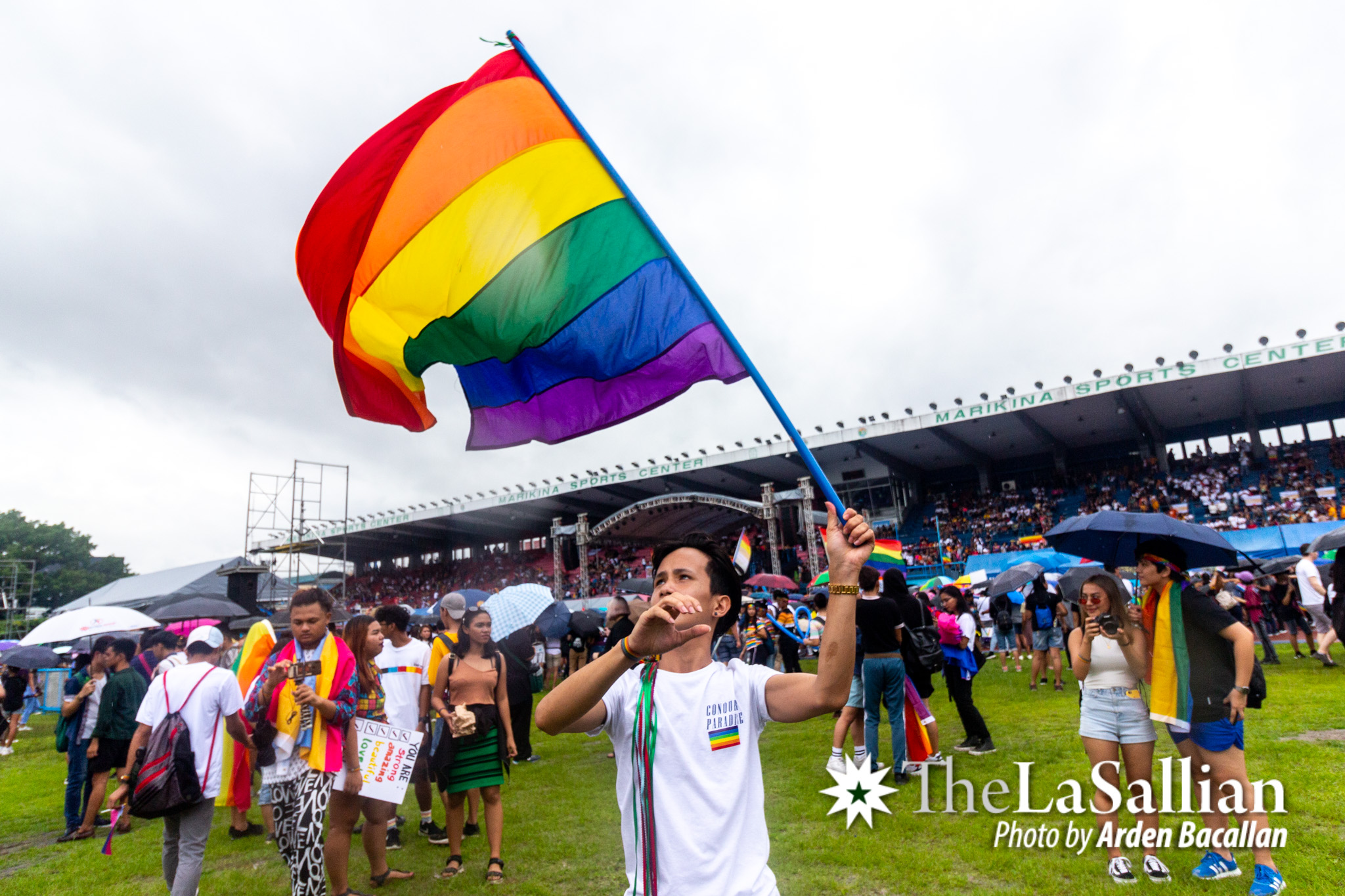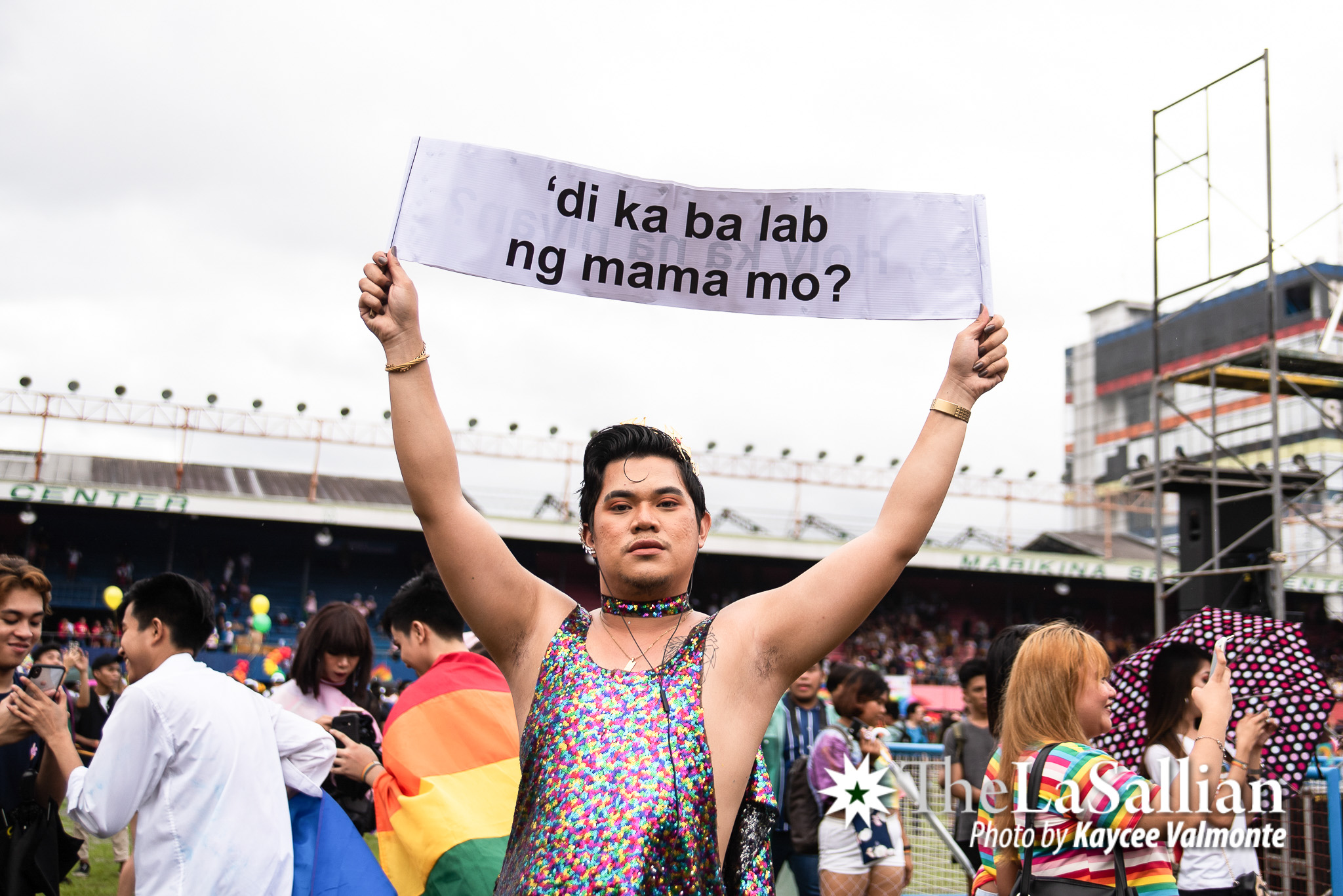It was two years ago when I first set my foot forward and marched in the colors of the rainbow—parading for love, screaming for respect. I can remember how humid and scorching that day was; the sunlight was blinding, most people had sweat running down their faces. Yet, everyone still walked street to street with genuine smiles and a welcoming aura, greeting you with “Happy Pride, Mahal.”
Two years later, the warm feeling remains. And now, even under the pouring rain, members and allies of LGBTQIA+ community marched with the same eager and passion—to resist, to fight back.

100,000 and more clasped hands
As June 29th marked this year’s Metro Manila Pride March, the streets of Marikina were once again painted with the shades of the rainbow. Corner by corner, there were people walking with a rainbow flag in their hands. Even though it was still early in the afternoon and the rain was drizzling, the line for the venue’s entrance got longer minute by minute. The Marikina Sports Center turned into a harmonious burst of colors as attendees dressed in vibrant clothes gathered together, exchanging smiles, greetings, and hugs.
By two in the afternoon, the crowd’s energy was further boosted as artistic acts performed on stage. What uplifted the crowd’s spirit more were the speeches shared afterwards. Ivan Gonzales from Students and Youth Cluster reminded the audience in Filipino that “Pride March isn’t just a celebration—it is also a protest.”
“Kapit-kamay tayong mamartsa para tunay na kilalain, tanggapin, at palayain ang LGBTQIA+ community,” he declared.
(We’ll march hand in hand for the LGBTQIA+ community to be recognized, accepted, and liberated.)
Later that afternoon, too, the crowd was found in tears as Marikina Mayor Marcelino Teodoro announced the enactment of the Anti-Discrimination Ordinance—a city ordinance that ensures everybody, regardless of gender identity and background, is given with equal opportunities and same level of respect.
“Walang sinuman sa basehan ng kasarian, pinanggalingan, o pananampalataya ang tatanggihan o hindi tatanggapin,” he announced amid cheers from the crowd.
(Nobody should be denied or rejected based on gender, place of origin, or faith.)
Hour after hour, the volume of the participants got larger. Right before the march began, it was noted that around 50,000 people were already inside waiting for the march to begin, breaking last year’s 25,000 record.

Space of love, space of resistance
“Resist nang sama-sama.”
(Resist together.)
These were the words repeated over and over as the march began.
As we drew closer to the gate, signalling the actual start of the march, raindrops started to fall. Everyone remained marching, waving their flags and banners; what awaited us outside was soul-stirring. We were surrounded by people who were smiling and taking photos and videos of us, and simultaneously greeting us a happy Pride. Some people even greeted us from the balcony of their buildings.
It was like those homecoming parades of notable people who brought honor to the country—and at this moment, it was us, the community, who were showered with love and honor. To say that it was touching was an understatement.
At one spot of the sidewalk, however, there was a group of protesters who screamed words such as “God will judge the sexually immoral” and “homosexuality is a sin”. Some of the members and allies of the community talked to them, tried to make them understand their side; however, the group’s strong belief remained unmoved. This kind of scenario has always been present at every Pride March. This time, it was actually shocking for me to see only a few “anti-LGBT” protesters around the area. In Pride March 2017 and 2018, they used to flock almost everywhere around the Sports Center. They also used to be more aggressive as some used to approach attendees and speak with expressions of hate and disgust on their face.
Nonetheless, what the anti-LGBT protesters kept on screaming could hardly be heard over the long cheers of the greater number of people supporting the fight of the LGBTQIA+ community. As Tala*, one of the attendees of the Pride March, described it, “There was nothing but love in the Complex, whether you look left or right, there were smiling faces.”

Today for tomorrow
To march is to say no, to resist, and to create a future free of hate, discrimination, and injustice. The marching will never stop for as long as there is hate towards the community. The Pride March is not a mere parade of support, it is an act of opposition toward the current treatment to LGBTQIA+ members.
We must be reminded that everyday, there is a person that gets harassed for being gay, there is a person who gets thrashed for being a lesbian, there is a person that gets killed for being transgender. Any day can be a dangerous day for some just because they are members of the LGBTQIA+ community because a person, who is essentially like any other, is treated differently only because he or she cannot conform to heteronormative standards of living.
“During Pride, I was thinking that I don’t want to march [for] our children, if ever they’re LGBT members, with a purpose to resist. By the time that we already have children, I want Pride to be a celebration of victory. We want [that] not only for ourselves, but also for the families of our children, and all the families of LGBTQIA+ members,” shared Rich*, another attendee of Pride March.
Everyday parade
“Happy Pride!” This was what I kept hearing even as Pride drew to a close. While I was walking, while I was in several establishments around Marikina, and even while I was waiting for vehicles—people who came from the March still extended their smiles and greetings. Pride did not end at the exit gate.
Hate against the LGBTQIA+ community is an everyday case. Taking a stand against it is also an everyday pledge, and Pride is a continuous battle. For as long as respect and understanding toward the community aren’t yet realized, we march. Until then, everyday, we march.
*Names with asterisks (*) are pseudonyms.
